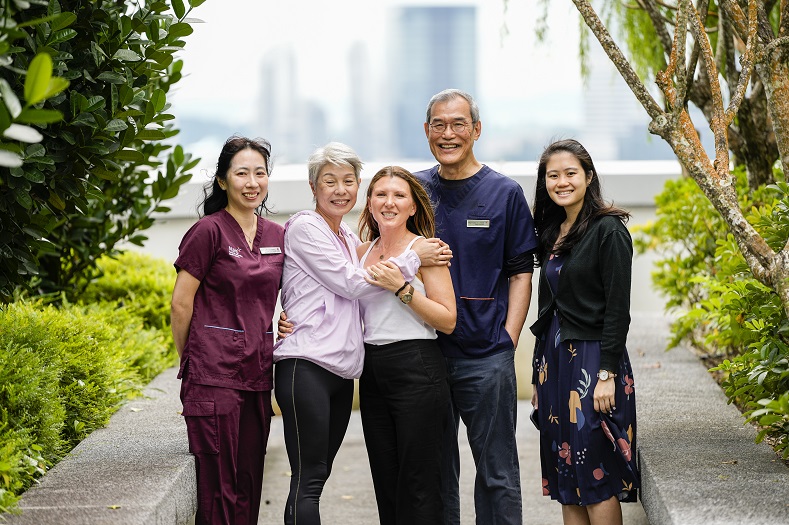Issue 4 | March 2024

 Subscribe and ensure you don't miss the next issue!
Subscribe and ensure you don't miss the next issue!
Hot flushes, sleep issues, anxiety—these are the symptoms that typically spring to mind when it comes to menopause. However, a recent discovery by researchers at the National University Hospital (NUH) is reshaping our understanding of this significant phase in women’s lives, casting light on a long-overlooked symptom: arthralgia.
This condition, characterised by aches and debilitating muscle and joint pain, has been found to be the top menopausal complaint for 30 to 40% of Singaporean women. Such a finding is crucial in guiding and refining the management of menopausal symptoms, paving the way for more tailored and effective treatment strategies.
Challenging established notions
The medical community, in both Singapore and abroad, has often overlooked menopausal muscle and joint pain, often attributing such symptoms to physical overexertion or the natural ageing process. “When it comes to symptoms of women in the West, hot flushes are usually number one,” adds
Professor Yong Eu Leong, Emeritus Consultant in the
Department of Obstetrics and Gynaecology, National University Centre for Women and Children (NUWoC), NUH .
However, two studies under the
Integrated Women’s Health Programme (IWHP), conducted by NUH and the Yong Loo Lin School of Medicine, National University of Singapore, have begun to challenge—and even overturn—these long-held beliefs.
The first one, involving 1,054 Singaporean women, reported that muscular and joint discomfort—not the commonly assumed hot flushes—topped the list of menopausal woes. About a third of participants (32.9%) experienced arthralgia during menopause, a stark contrast to lesser-reported symptoms such as sleep issues, vaginal dryness, and mental and physical exhaustion. Hot flushes ranked fifth.
The second study further reinforced the prevalence of arthralgia among menopausal women. In a cohort of 1,120 midlife women, 74.9% experienced varying degrees of muscle and joint pain. Crucially, this study associated arthralgia with other symptoms, including poor muscle strength and vaginal dryness, which could foster a more holistic understanding of arthralgia’s impact on women’s health.
“Furthermore, breast cancer patients on oestrogen inhibitors, which mimic menopausal conditions, also suffer from arthralgia,” says Prof Yong, elaborating on why he believes that menopausal muscle and joint pain is indeed a real symptom. “A study from the United States 20 years ago also found that women undergoing menopausal hormone therapy experienced less muscular and joint pains than those who did not. But as soon as the therapy was discontinued, the pain and stiffness returned.”
Armed with these insights, the IWHP is collaborating with physiotherapists at NUH in a follow-up study aimed at developing targeted interventions, including exercise regimens to enhance muscle strength, along with exploring the potential of menopausal hormone therapy in alleviating joint pains and improving the overall well-being of midlife women.
Prof Yong and Cammy Tsai, Principal Physiotherapist in the Department of Rehabilitation, NUH, offer some advice for alleviating menopausal pain:
1. Menopausal Hormone Replacement (MHT): By replacing oestrogen, MHT may relieve joint pains associated with menopause. However, women receiving MHT must be closely monitored by obstetricians as the treatment may introduce a range of side effects, ranging from breast tenderness and headaches to unexpected vaginal bleeding. In rare cases, severe complications like blood clots and breast cancer may occur. Recent advancements in MHT regimens have aimed to minimise the risks of blood clots and cardiovascular disease, aligning them closely with those of non-users.
2. Exercise: Walking can reduce arthralgia-induced pain by enhancing blood circulation and muscle strength. Workouts focusing on resistance strength training and balance are beneficial in building muscle mass and retaining flexibility.
3. Weight management: It is crucial to maintain a healthy body weight. Excess weight puts additional stress on weight-bearing joints, such as the knee and the ankle, exacerbating menopausal muscle and joint pain. Moreover, weight gain can lead to increased inflammatory factors, potentially causing pain in non-weight-bearing joints, such as the fingers and shoulders.
|